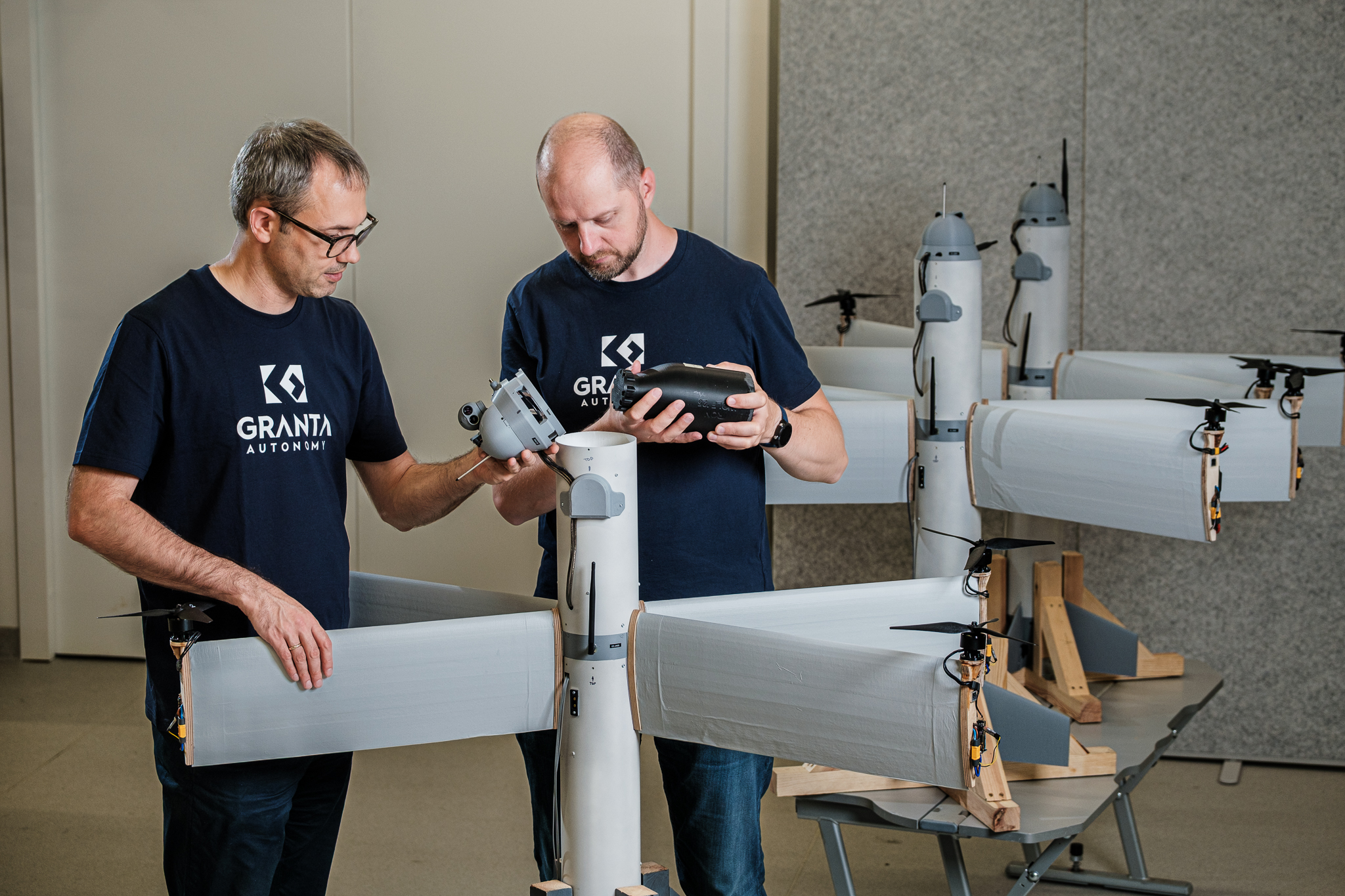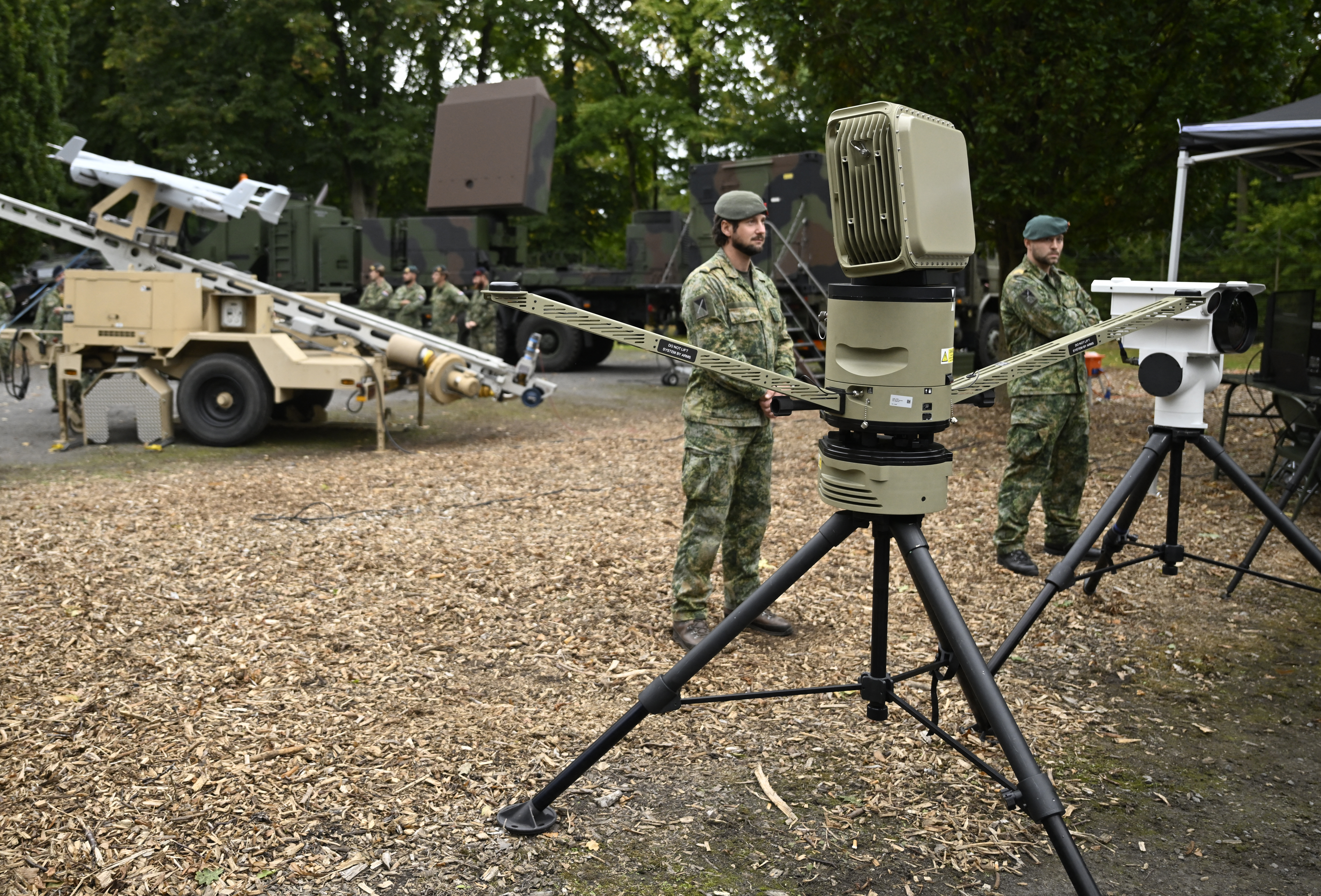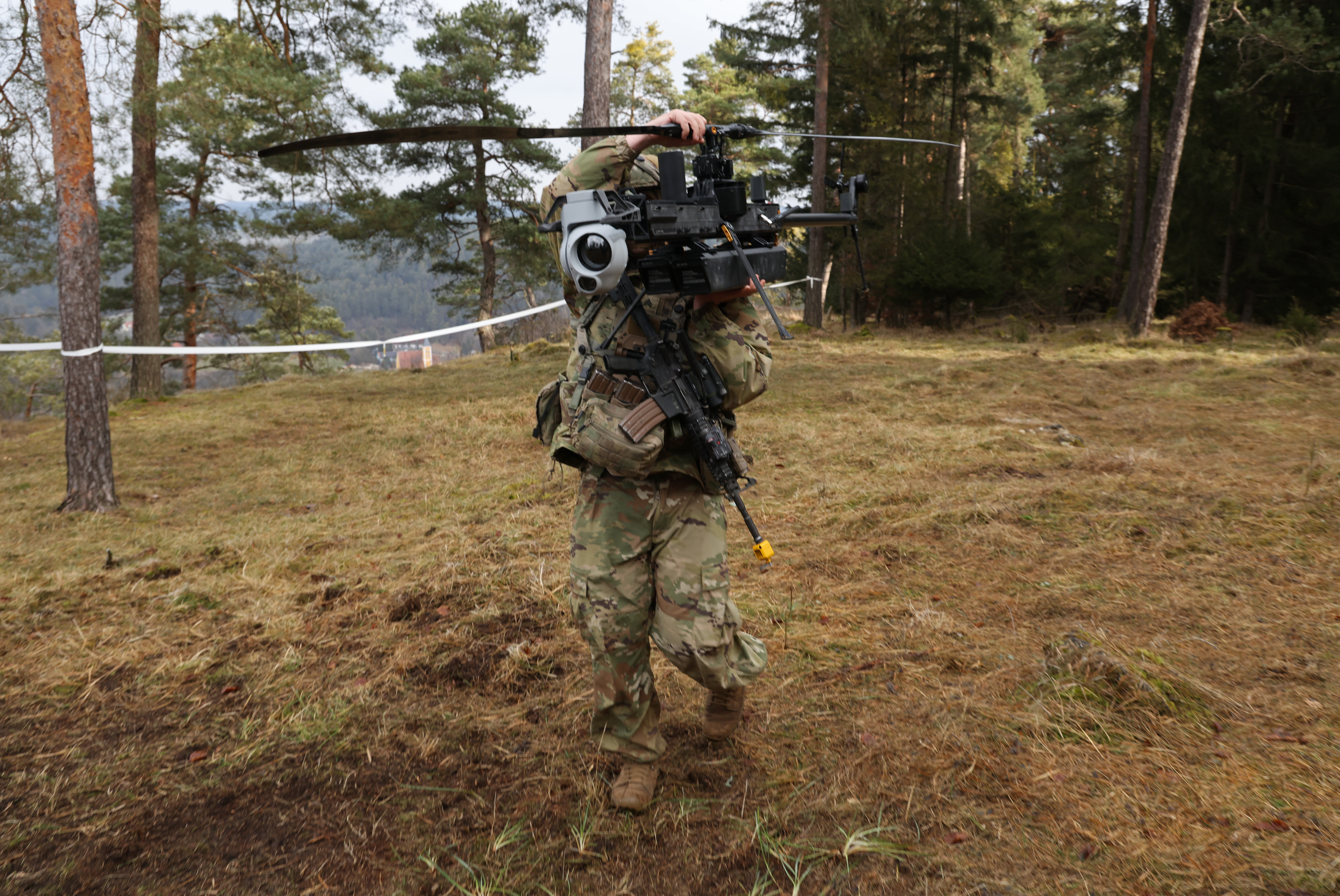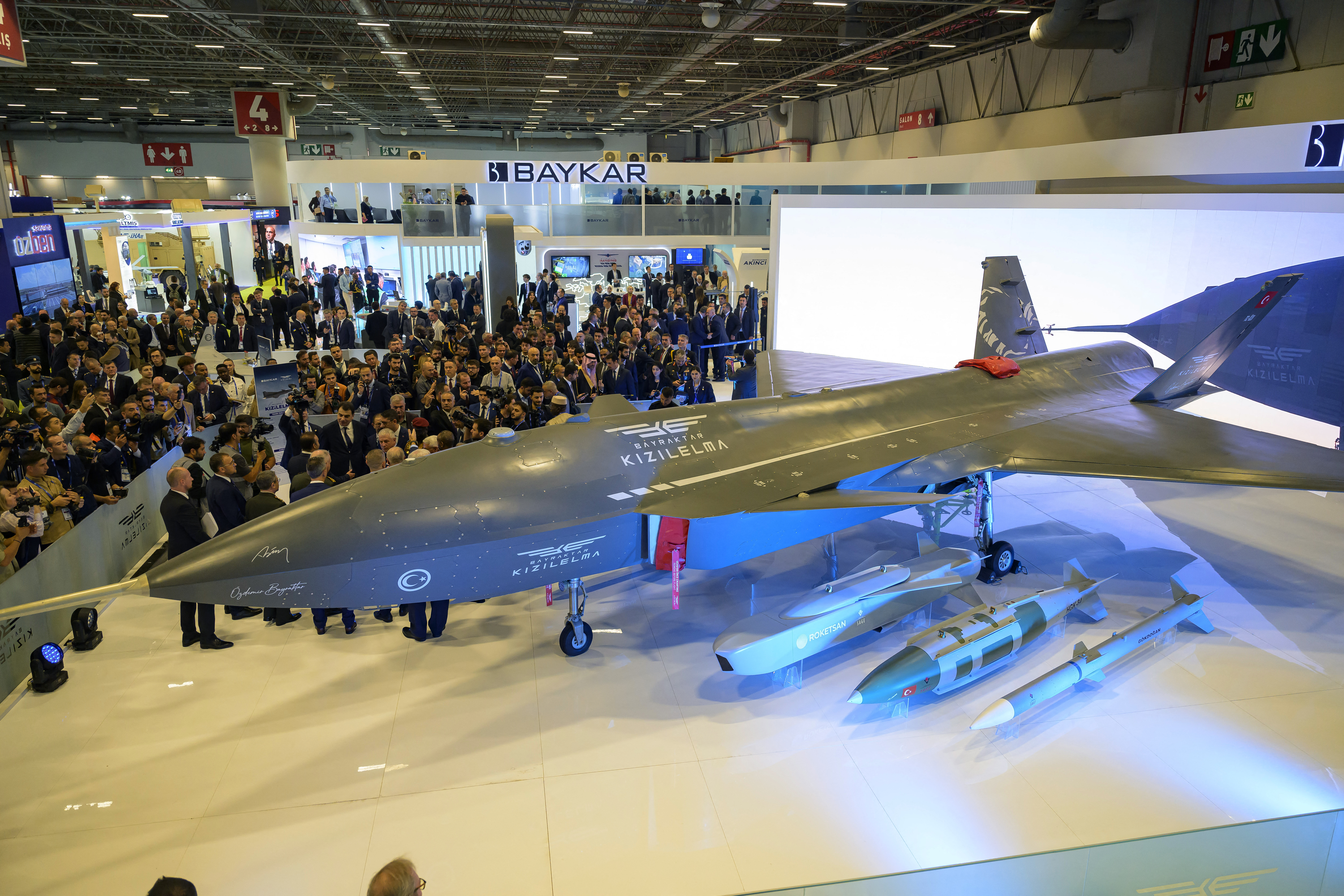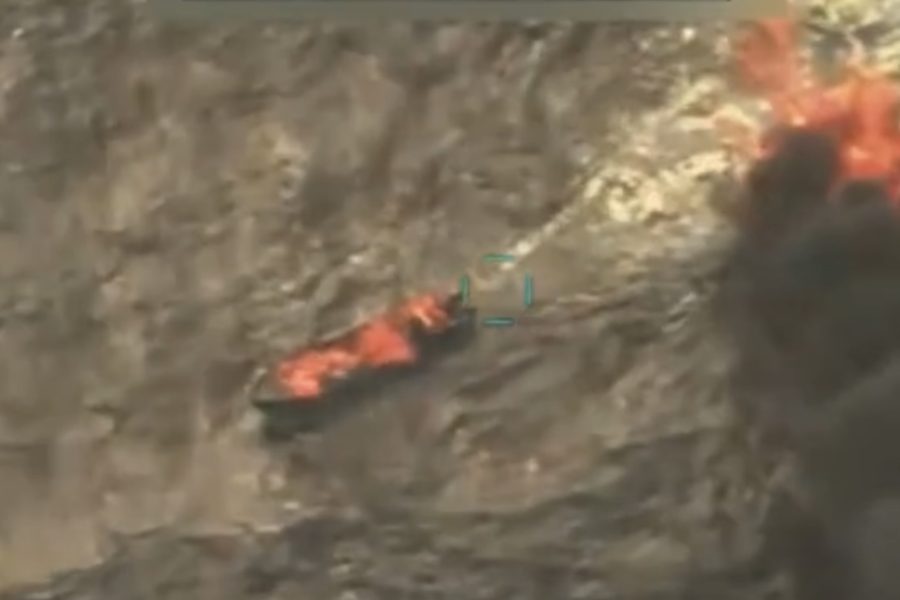
The U.S. military conducted its second deadly strike on an alleged drug-carrying vessel off the coast of Venezuela, President Donald Trump announced Sept. 15, as his administration continues an aggressive military campaign in the Caribbean.
American forces conducted a “Kinetic Strike against positively identified, extraordinarily violent drug trafficking cartels and narcoterrorists,” Trump wrote in a social media post, which included an overhead video of a boat—likely captured from a drone—in unidentified waters before the vessel exploded in a fireball. The boat appeared to be stationary in the water before it was hit. Trump said three men in the boat were killed by U.S. forces in the engagement.
“The Strike occurred while these confirmed narcoterrorists from Venezuela were in International Waters transporting illegal narcotics,” Trump wrote. The U.S. government did not immediately provide any evidence for that claim.
“These extremely violent drug trafficking cartels POSE A THREAT to U.S. National Security, Foreign Policy, and vital U.S. Interests,” Trump added. He said no U.S. forces were injured conducting the strike.
Speaking in the Oval Office later in the day, Trump said he was shown video of the strike by Chairman of the Joint Chiefs of Staff Air Force Gen. Dan Caine.
The U.S. military did not say how the strike was conducted, or whether U.S. forces made any attempt to interdict the boat or make any contact with the individuals on the vessel before conducting the strike, nor whether any warnings were offered to the people in the boat before the vessel was blown up.
A Pentagon spokesperson did not provide any operational details about the strike when asked about the military action. A spokesperson for U.S. Southern Command, which oversees U.S. forces in the region, referred questions to the White House, which did not respond.
The U.S. has significant airpower in the region that could have carried out the strike, as well as Navy warships. The strike comes a day after U.S. Marine Corps F-35B Lightning II stealth fighters landed at an airfield in Puerto Rico on Sept. 14. At least two MQ-9 Reaper drones have been spotted stationed at a different air base on the U.S. territory and were photographed armed with what appear to be Hellfire surface-to-air missiles earlier this month. The Navy’s Wasp-class amphibious assault ship USS Iwo Jima is in the Caribbean embarked with vertical or short takeoff and landing AV-8B Harrier fighter jets.
The U.S. has also deployed Air Force C-5 Galaxy and C-17 Globemaster III cargo aircraft, as well as KC-135 Stratotanker and KC-46 Pegasus aerial refuelers, to bases in Puerto Rico and the U.S. Virgin Islands.
The U.S. mission in the region has stirred debate, much of which has focused on a previous Sept. 2 airstrike that the U.S. carried out against a small boat. Trump said that the previous operation also targeted “narcoterrorists” from the Venezuelan gang Tren de Aragua and their shipment of drugs. The second engagement will almost certainly fuel further questions about the legality of the strike, which Democratic and some Republican members of Congress have questioned.
“President Trump’s actions are an outrageous violation of the law and a dangerous assault on our Constitution. No president can secretly wage war or carry out unjustified killings—that is authoritarianism, not democracy,” Sen. Jack Reed (D-R.I.), the Ranking Member of the Senate Armed Services Committee, said in a statement. “These reckless, unauthorized operations not only put American lives at risk, they threaten to ignite a war with Venezuela that would drag our nation into a conflict we did not choose.”
Trump administration officials have not publicly discussed the details of the Sept. 2 and Sept. 15 missions.
The Sept. 2 strike, which killed 11 people, was carried out by a drone, according to Sen. Rand Paul (R-Ky.), a member of the Senate Foreign Relations Committee. That would mean the strike was almost certainly conducted by an MQ-9, such as the ones stationed in Puerto Rico, and Trump released similar videos of both the Sept. 2 and Sept. 15 strikes.
In a Sept. 4 notification to Congress regarding the Sept. 2 strike, Trump wrote there could be the “potential for further such actions” and indicated the military campaign was currently open-ended.
“In the face of the inability or unwillingness of some states in the region to address the continuing threat to United States persons and interests emanating from their territories, we have now reached a critical point where we must meet this threat to our citizens and our most vital national interests with United States military force in self-defense,” Trump wrote at the time. “It is not possible at this time to know the full scope and duration of military operations that will be necessary. United States forces remain postured to carry out further military operations.”
Hegseth offered similar remarks on Sept. 15.
“Narco-terrorists are enemies of the United States—actively bringing death to our shores,” Hegseth wrote in a post on X. “We will stop at nothing to defend our homeland and our citizens. We will track them, kill them, and dismantle their networks throughout our hemisphere—at the times and places of our choosing.”
The post US Military Blows Up Second Alleged Drug Boat in Caribbean appeared first on Air & Space Forces Magazine.

Air, Air Force, Caribbean, Donald Trump, Gen. Dan Caine, Harrier, Marine Corps, MQ-9 Reaper, Navy, Pete Hegseth, President Donald Trump, Puerto Rico, Sen. Rand Paul, USS Iwo Jima, Venezuela
Air & Space Forces Magazine
[crypto-donation-box type=”tabular” show-coin=”all”]

